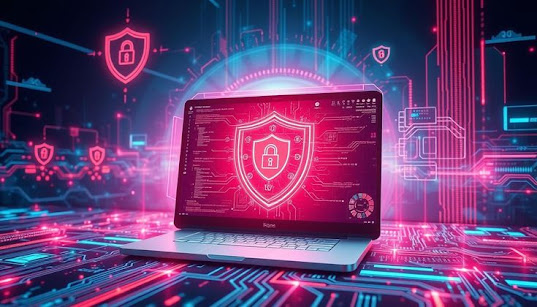Adaptive AI in Cybersecurity: The Shift from Static to Dynamic Defenses
Adaptive AI in Cybersecurity: The Shift from Static to Dynamic Defenses
Introduction
The cybersecurity landscape in 2025 is fundamentally different from what it was just a few years ago. The static defense systems once relied upon are proving to be ineffective against today’s sophisticated, constantly evolving cyber threats. The rise of adaptive AI in cybersecurity marks a significant transition—one that enables systems to respond to threats in real time, predictively learn from data, and autonomously adjust defense strategies.
In this blog post, we explore how adaptive AI is transforming cybersecurity, what makes it superior to traditional approaches, and why dynamic, intelligent defenses are now essential for digital resilience.
What Is Adaptive AI?
Adaptive AI refers to artificial intelligence models that can evolve over time. Unlike static machine learning systems that are trained once and deployed, adaptive AI continuously learns from new data, dynamically adjusting to changes in user behavior, threat vectors, and environmental context.
- Real-time learning: Adaptive AI updates its threat model as new events occur.
- Context-aware decisions: It understands the context of data to make accurate predictions.
- Autonomous response: It can initiate automated mitigation strategies without human intervention.
Static Cybersecurity Defenses: Why They’re Failing in 2025
Traditional cybersecurity relies heavily on signature-based detection, firewalls, and predefined rule sets. These mechanisms are reactive—they detect known threats but often miss unknown or evolving attacks.
In 2025, attackers are leveraging AI to craft adaptive malware, polymorphic code, and AI-driven phishing attacks that constantly change signatures and behaviors. Static defenses are simply too slow and rigid to cope.
- High false negatives: Unknown attacks often go undetected.
- Slow response time: Human-dependent systems delay mitigation.
- Outdated threat intelligence: Signature databases can’t keep up.
How Adaptive AI Transforms Cybersecurity
Adaptive AI integrates machine learning, neural networks, behavioral analytics, and reinforcement learning to proactively defend against attacks. Here's how:
1. Continuous Threat Monitoring
Adaptive AI systems monitor networks 24/7, flagging even the slightest anomalies in user or system behavior. These insights are contextualized using historical data to detect zero-day threats and unknown malware.
2. Real-Time Incident Response
AI algorithms can isolate infected endpoints, block suspicious IP addresses, and trigger sandbox testing—all in real time. This eliminates response delays that often allow attackers to move laterally within networks.
3. Predictive Analysis and Threat Anticipation
Instead of waiting for threats to materialize, adaptive AI predicts potential vulnerabilities based on emerging patterns. This predictive capability is critical for preemptive patching and system hardening.
4. Automated Playbooks
By integrating with SOAR (Security Orchestration, Automation, and Response) systems, adaptive AI can execute complex playbooks autonomously—minimizing human error and enhancing consistency.
Key Benefits of Adaptive AI in Cyber Defense
- Speed: Immediate detection and mitigation of threats.
- Scalability: Efficient handling of large-scale environments and data streams.
- Resilience: Ability to bounce back and adapt to new attack strategies.
- Accuracy: Lower false positives through context-aware analysis.
These advantages make adaptive AI a natural evolution in defending modern infrastructure, especially with the rise of cloud-native applications, hybrid workplaces, and IoT ecosystems.
Case Studies: Adaptive AI in Action (2025)
Case 1: Financial Sector
A major European bank implemented adaptive AI to secure its mobile banking platform. The AI detected an unusual access pattern suggesting credential stuffing. Within 4 seconds, it blocked the attacker, reset credentials, and alerted the SOC team—saving the bank from a massive data breach.
Case 2: Healthcare
A hospital system in Asia used adaptive AI to protect patient records. When an AI model detected irregular queries in the EHR database, it flagged a possible insider threat. Investigation revealed a contractor misusing access to steal personal health data.
Case 3: Smart Cities
In a smart city in the Middle East, adaptive AI was deployed to secure traffic control infrastructure. The system predicted a botnet-driven DDoS attack 6 hours before its execution by identifying malicious chatter across traffic sensors. Countermeasures were deployed automatically.
Challenges and Considerations
While adaptive AI offers powerful benefits, it also comes with challenges:
- Bias and training data quality: Poor data can mislead AI behavior.
- Adversarial AI: Hackers are developing AI to deceive security AIs.
- Compliance and transparency: AI decisions must meet regulatory standards and explainability.
- High costs: Implementing real-time adaptive systems can be expensive for small businesses.
Balancing innovation with ethical and operational risks is essential to deploying AI responsibly in cybersecurity.
The Future Outlook
As 2025 continues to unfold, adaptive AI is expected to become a default component in modern cybersecurity stacks. By 2027, over 80% of enterprise SOCs are projected to rely on AI-powered dynamic defense mechanisms, according to forecasts from leading research firms.
Future developments may include:
- Greater use of generative AI for creating defensive playbooks.
- Integration with quantum encryption protocols.
- Collaborative AI ecosystems where multiple systems share insights in real time.
Conclusion
Cybersecurity is no longer about building walls; it’s about building intelligence. As threats evolve, so must defenses. Adaptive AI in cybersecurity represents the future—one where systems learn, evolve, and defend without waiting for human intervention.
The shift from static to dynamic cyber defense is not just a technological leap—it’s a strategic imperative for any organization that wants to thrive in the digital era.
For CISOs, security engineers, and tech decision-makers, the time to embrace adaptive AI isn’t tomorrow—it’s now.




Comments
Post a Comment